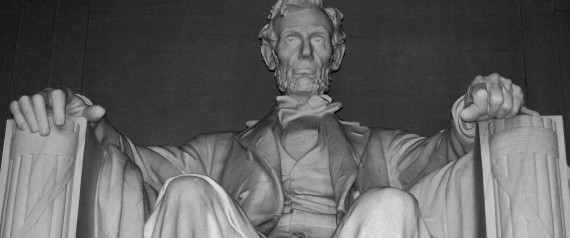
Two score and nine years after Abraham Lincoln had won the Civil War, preserved the Union, abolished slavery, and was assassinated, the nation embarked on the construction of a memorial to honor his legacy.
The story of that memorial is, in many ways, emblematic of the country Lincoln fought to keep -- one full of grand vision and hope, and yet one often full of division, political intrigue, prone to fights over spending, and at times slow to act.
The Lincoln Memorial has become such an emblematic symbol of the National Mall today that it's hard to believe the site where it stands was once part of the Potomac River. Or that, despite the now universal admiration for the 16th president, it almost never got built at all.
Soon after Lincoln's death, Congress tried to build a monument, but the effort floundered in the midst of lingering post-Civil War bitterness.
Between 1901 and 1908, Congress tried and failed five times to create a memorial commission. The $2 million memorial, sited on an infested marsh, was thought to be a colossal waste of money and not a fitting location for a national monument to this hero. In 1910, Congress finally approved a memorial commission. But even then, there were debates over what it should look like and where it should be located. Not uncharacteristically, Congress spent nearly five years studying suitable locations and decided a memorial to Lincoln should be built somewhere between Washington, D.C. and Gettysburg. Many wanted it next to Union Station, Washington, D.C.'s train station.
It wasn't until 1913 that Congress finally agreed to put it on the Mall. And after construction started in 1914, it would be another eight years before the Memorial was finished.
Now, 100 years to the day after the country finally broke ground on the Lincoln Memorial, the statue of a resolute Lincoln looks steadily across the National Mall to the Capitol Building of the Union he preserved.
Every piece of the Memorial holds a special meaning. Its 36 columns, for example, represent each of the re-United States of the time. The stones used in its construction hold a special meaning. Architect Henry Bacon chose marble, granite and limestone from states in the north, south, east and west, to show how a country once torn apart could come together again to create a grand vision and something beautiful.
Today, millions climb its steps each year to gaze at Lincoln, read his profound words carved into its walls, and marvel at the beauty and majesty of the National Mall.
And over the years, the Memorial has itself often become part of history.
In 1939, Marian Anderson, an African American, and one of the most celebrated contraltos of the time, was denied permission to perform to an integrated audience at the nearby Constitution Hall. With the help of the Roosevelt administration, she gave her performance on the steps of the Lincoln Memorial and sang before a crowd of 75,000 people -- black and white -- on Easter Sunday.
Twenty-four years later, 200,000 would gather at the Memorial to hear Martin Luther King, Jr. share his dream of a future where Americans were judged by the content of their character, not the color of their skin. That speech, by the way, took place 100 years after Lincoln signed the Emancipation Proclamation.
In May 1970, President Nixon unexpectedly went to the Lincoln Memorial in the middle of the night to talk to Vietnam War protesters just days after four people were shot at Kent State. And in January 2009, a star-studded concert was held there to celebrate the inauguration of our first black president.
Even though it's just one of the many amazing things to see, do, and learn about on the National Mall, I still am still awestruck each time I see the Lincoln Memorial. It is no surprise that when the Memorial was vandalized last summer, it made national news and so many Americans had such an emotional reaction. This marble memorial to Lincoln, this stage upon which course altering moments of our democracy have played out, has become a sacred place for so many.
Like the nation Lincoln fought to protect, the Memorial was worth every political battle, every bitter disagreement, and every penny needed to make it a reality. And in today's equally divisive times, it is worth our efforts to preserve the Memorial and the grand park that provides the perfect setting for honoring our past and creating our future.
Caroline Cunningham is the President of the Trust for the National Mall, the official nonprofit partner of the National Park Service, which has worked in recent years to restore the Lincoln Reflecting Pool among other parts of the National Mall.
To further understand the relevance of the Lincoln Memorial today, listen to the words of this National Mall Park Ranger, originally from Somalia, whose appreciation of the Memorial is shaped by her firsthand understanding of civil war: